50 Fun Facts About Animals for Kids
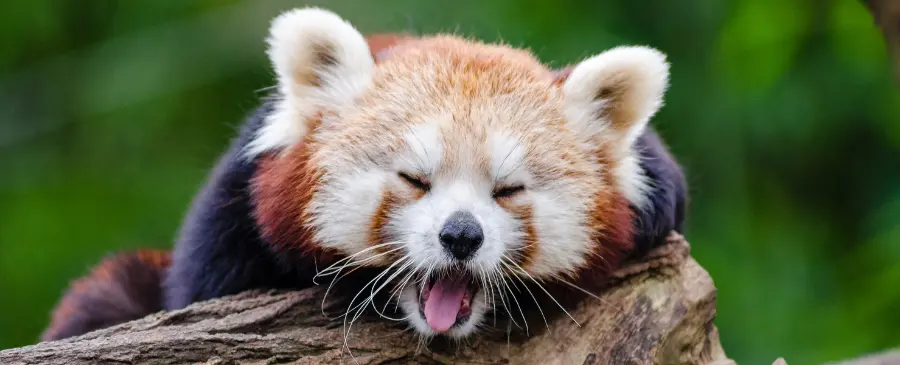
Did you know that dolphins have names for each other and that turtles can breathe through their butts? These are just two of the cool things that animals do, and there are so many more! From surprising behaviors to unique abilities, here are the top 5 animal fun facts in 10 different categories for you to explore:
If you’re amazed by the tidbits in this article and want to learn more about animals, head over to the animal nature walk lesson with your Learn Libre membership. You’ll get to make your own observations about animals, and see some of the interesting characteristics that animals in your neighborhood share.
Interesting Animal Behaviors
Animals are fascinating, not just because of how they look, but also because of what they do. Every day, animals around the world are doing things that might surprise us. In this section, let’s discover some of the unique and interesting behaviors that help animals live and communicate in their environments.
- Dolphins Have Names for Each Other: Dolphins use special whistles to communicate, almost like how we use names. Each whistle is unique to an individual dolphin, allowing them to identify and call out to each other in the vast ocean.
- Cows Have Best Friends: Cows are social animals and often form close bonds with one another. They tend to spend most of their time with a specific cow friend, showing that friendship is important in the animal kingdom too.
- Penguins Propose with a Pebble: Penguins use pebbles to impress potential mates. They search for the smoothest and prettiest pebble to present them. This behavior is part of their courtship and mating rituals.
- Bees’ Waggle Dance: Honeybees use a fascinating method to communicate – the ‘waggle dance.’ When a bee discovers flowers, it returns to the hive and performs this dance. The direction and duration of the dance tell other bees the exact location of the flowers.
- Squirrels Plant Thousands of Trees Each Year: Squirrels help the environment by planting trees without even realizing it. They bury nuts, which they sometimes forget to retrieve. These forgotten nuts then grow into new trees, aiding in forest growth.
Each of these behaviors is a small window into the captivating lives of animals. Whether it’s using sounds to communicate like dolphins or helping the environment like squirrels, animals have unique ways of living that we’re just beginning to understand.
Fun Facts About How Animals Adapt to Different Environments
Animals are amazing at adapting to their homes, whether it’s in the deep ocean, dense forests, or vast deserts. These adaptations are special skills or features that help them survive and thrive. Let’s explore some of these adaptations and see how they perfectly suit their habitats.
- Camels Have Three Eyelids: In the sandy desert, camels have a cool trick to protect their eyes. They have three eyelids! These extra eyelids work like windshield wipers to keep the sand out. This is important for camels to see and survive in their windy, sandy home.
- Sea Otters Use Kelp Forests: Sea otters are clever ocean dwellers. They use kelp forests like a natural anchor, wrapping themselves in kelp to stop from drifting away while they sleep. The kelp forest is also a safe place for them to find food and protect their babies from predators.
- Frogs Freeze in Winter and Thaw in Spring: Some frogs have an incredible ability to survive freezing cold winters. They can actually let their bodies freeze and then thaw out when it warms up. This adaptation lets them live through temperatures that would be too cold for many other animals.
- Turtles Can Breathe Through Their Butts: In the water, some turtles have developed a special way to breathe. They can absorb oxygen directly from the water through their rear ends! This lets them stay underwater for a long time without coming up for air.
- Desert Foxes Use Their Big Ears to Keep Cool: Desert foxes, especially the tiny Fennec Fox, have really big ears. But these ears aren’t just good for hearing. They help the foxes stay cool in the hot desert. The large ears act like natural air conditioners, releasing heat and keeping the foxes comfortable in the scorching sun.
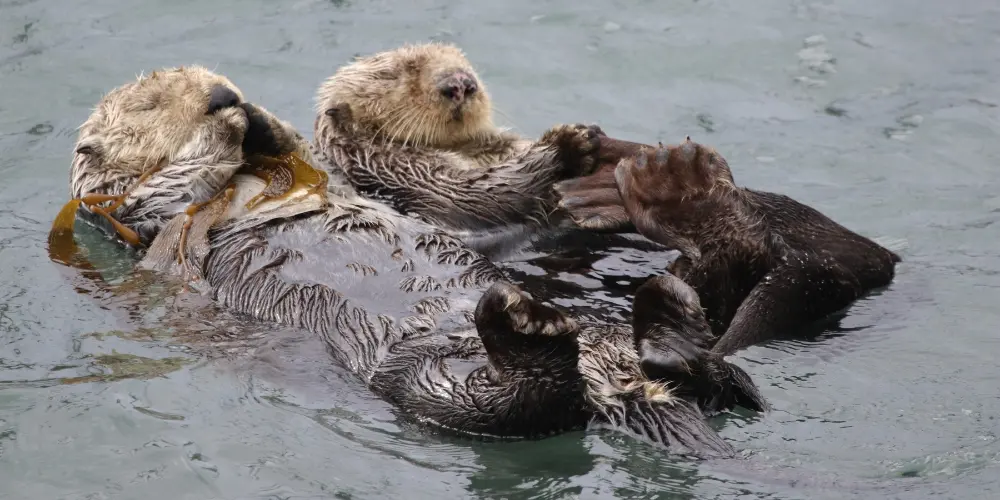
These awesome adaptations show just how clever and adaptable animals can be, fitting perfectly into their unique environments.
Animal Senses That Will Boggle Your Mind
The animal kingdom is a wonderland of sensory superpowers. Animals have developed some extraordinary ways to navigate, hunt, and interact with their world using amazing senses. Let’s dive into some of the most remarkable sensory abilities found in animals, and see how they use these special powers to thrive in their environments.
- Bats Use Echolocation to Navigate and Hunt: Imagine playing a sound game in the dark. That’s what bats do with echolocation. They send out sounds and listen for the echoes to find their way and catch food when it’s pitch black.
- The Mantis Shrimp’s Extraordinary Vision: The mantis shrimp has one of the most complex eyes in the animal kingdom. It can see a range of colors we can’t even imagine. This helps them spot predators and prey in the busy, colorful world of the coral reef.
- Snakes ‘Smell’ with Their Tongues: Snakes have a unique approach to ‘smelling.’ They flick their forked tongues to collect airborne particles and then press them against a special organ in the roof of their mouth. This technique gives snakes an exceptional sense of ‘smell,’ aiding them in tracking down prey and sensing their surroundings.
- Sharks Can Detect Electrical Fields: Sharks possess an incredible ability to detect the electrical fields created by other living creatures. Thanks to their special sensory organs called ampullae of Lorenzini, sharks can sense even the slightest electrical pulses, making them formidable hunters in the ocean.
- Pigeons Can Detect Earth’s Magnetic Field: Pigeons have an amazing sense of direction. They can detect Earth’s magnetic field, which they use to navigate during their long flights. This magnetic sense helps them find their way home across great distances, a skill that has been admired and utilized by humans for centuries.
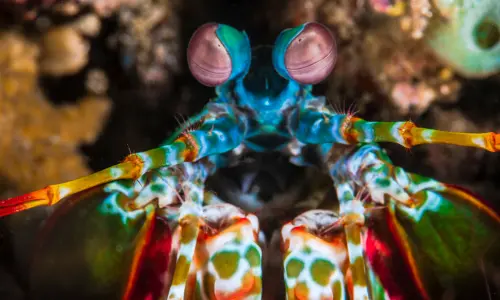
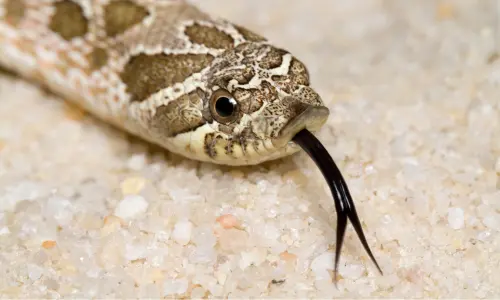
Each of these sensory abilities showcases the diverse and intricate ways animals interact with their world, providing us with fascinating insights into the power and complexity of nature’s sensory systems.
Unique Animal Eating Habits
Every animal has its own way of eating, suited to where it lives and what it needs to stay healthy. From the smallest bird to the largest mammal, discover how these five animals have adapted their eating habits to survive in their world.
- Hummingbirds Drink Nectar with Long Tongues: Hummingbirds have incredibly long and slender tongues, which they use to sip nectar from flowers. Their tongues are so efficient that they can taste and consume nectar at an astonishingly fast rate, essential for their high-energy lifestyle.
- Pandas Spend Up to 14 Hours a Day Eating Bamboo: Giant pandas have a diet primarily consisting of bamboo, and they eat a lot of it! They can spend up to 14 hours each day munching on bamboo to fulfill their dietary needs, despite having a digestive system more suited for a carnivorous diet.
- Vampire Bats Feed Exclusively on Blood: Vampire bats have a unique diet in the animal kingdom – they feed entirely on blood. They are nocturnal creatures that quietly approach their prey, make a small bite, and lap up the blood with their tongues.
- Archerfish: Expert Aerial Hunters of the Water: Archerfish have a remarkable way of catching their food. They shoot powerful jets of water from their mouths to knock insects off overhanging leaves and branches. This precise squirt can hit targets up to several feet away! Once the unsuspecting insect falls into the water, the archerfish quickly gobbles it up.
- Arctic Foxes Change Diet with the Seasons: Arctic foxes have a varied diet that changes with the seasons. In the summer, they eat rodents, fish, and birds, while in the winter, when these foods are scarce, they scavenge on the leftovers of larger predators like polar bears.
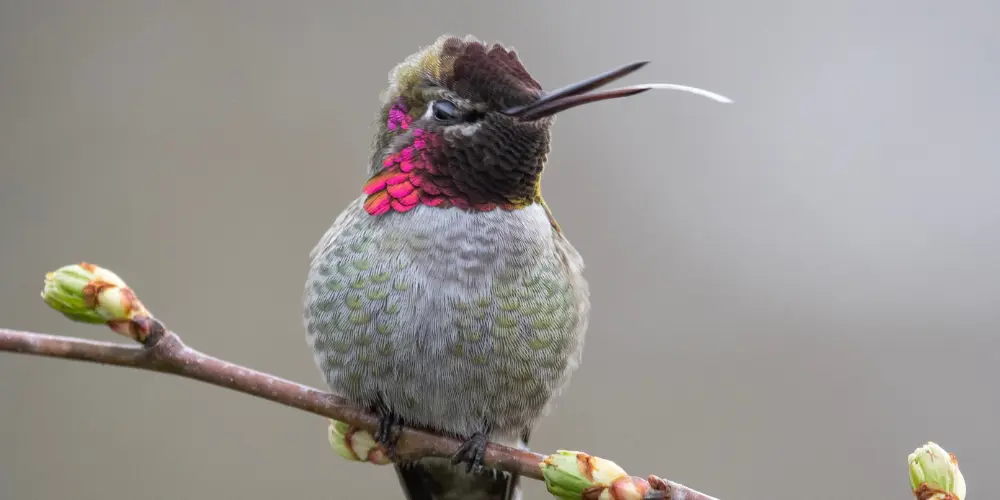
These examples show us the diversity of eating habits in the animal kingdom. Each animal has developed unique ways to find and consume their food, adapting perfectly to their environment and lifestyle.
Unexpected Physical Features That Animals Have
Animals are full of surprises, especially when it comes to their bodies! Some animals have powerful features that seem almost like superpowers. Let’s explore some of these physical abilities and characteristics. You’ll see just how special and different each animal can be.
- Octopuses Have Three Hearts: Octopuses are unique because they have three hearts. Two hearts pump blood to the gills to get oxygen, and the third one sends this oxygen-rich blood around the body. This system helps them move and survive in the ocean’s depths.
- Giraffes Have Black Tongues: Giraffes have long, dark tongues. The black color helps protect their tongues from sunburn, as they’re often exposed to the sun while eating leaves from tall trees. This adaptation is essential for their survival in sunny habitats.
- Starfish Don’t Have Brains: Instead of a central brain, starfish have a complex system of nerves in their arms. These nerves help them sense their environment, find food, and move. This unique setup shows there are different ways to navigate the world.
- A Rhino’s Horn is Made of Hair: Rhino horns are not like other animal horns. They’re made of keratin, the same material as human hair and nails, tightly packed together. This structure makes the horn strong and durable for defense and foraging.
- Polar Bears Have Black Skin and Translucent Fur: Polar bears have an amazing adaptation with their fur and skin. Their skin is black, absorbing heat from the sun to stay warm. Their fur, though, is clear and hollow, not white as it seems. This clear fur reflects light, making them appear white. This helps them blend perfectly into their snowy environment.
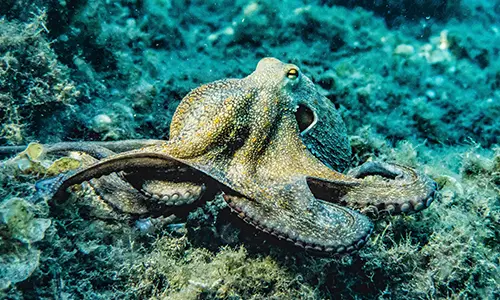
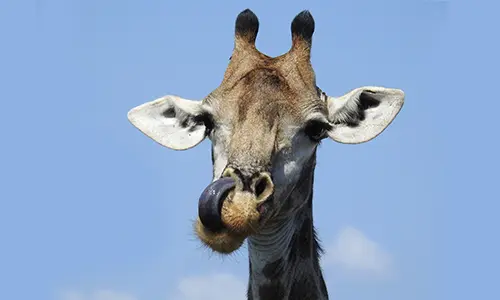
Each of these amazing facts reveals the special adaptations animals have developed to thrive in their environments. From the depths of the ocean to the icy Arctic, every animal has something special that makes it perfectly suited to its home.
Clever Defense Mechanisms in the Animal World
In the wild, staying safe often means being clever and resourceful. Animals have developed an array of ingenious defensive tactics to protect themselves from predators and dangers. From blending in with the environment to startling physical displays, these natural defense mechanisms are not only fascinating but also highly effective. Let’s explore some of the most ingenious ways animals keep themselves safe.
- Chameleons Change Color for Camouflage and Communication: Chameleons are famous for their remarkable ability to change color. This skill helps them blend seamlessly into their surroundings, providing excellent camouflage. But that’s not all – they also use color changes to communicate with other chameleons, making their skin a multifunctional tool for survival.
- Porcupines Use Sharp Quills for Protection: When a porcupine feels threatened, it raises its sharp quills to appear larger and more daunting to predators. These quills are not only intimidating but can also detach and become embedded in a predator, acting as a powerful deterrent against attacks.
- Skunks Spray a Strong Odor as a Deterrent: Skunks are well-known for their defense strategy – spraying a potent, foul-smelling liquid. This spray is so strong that it can deter most predators and be detected from a considerable distance, providing an effective means for skunks to keep safe.
- Pufferfish Inflate to Ward Off Predators: In moments of danger, pufferfish can inflate their bodies rapidly. This inflation makes them appear larger and more challenging to swallow. Their spines, which become more pronounced when they puff up, add an extra layer of defense against would-be predators.
- Bombardier Beetles Spray Chemicals to Fend Off Threats: Bombardier beetles have a special way to keep safe. They can create a hot liquid inside their bodies that is very irritating. When they feel threatened, they spray this liquid from their abdomen. This spray is a clever defense against predators, showing just how ingenious nature can be.
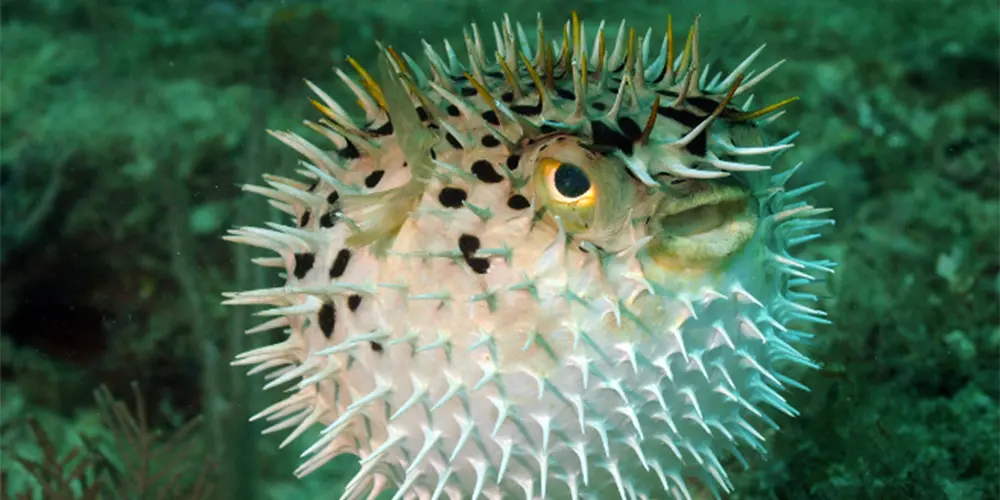
Each of these defense strategies is a testament to the adaptability and creativity of animals in the face of danger. From the color-changing chameleon to the chemical-spraying bombardier beetle, the ways animals protect themselves are as varied as the animals themselves.
Fun Facts About Animal Lifecycles
The animal kingdom is full of surprises, especially when it comes to how long animals live and how they grow. Some animals go through dramatic changes as they mature, while others boast lifespans that are either incredibly short or astonishingly long. Let’s dive into some of these remarkable facts about animal growth and lifespans, from fleeting life cycles to enduring existences.
- Dragonflies Live Most of Their Life as Nymphs: Dragonflies spend several years underwater in a nymph stage, where they are formidable predators. Only for a brief period as adults do they take to the skies. This drastic change from water to air is a significant transformation in their lifecycle.
- A Mayfly Lives for Only 24 Hours: Mayflies have one of the shortest adult life spans in the animal world. After spending a year as larvae in water, they emerge as adults with just a day to mate and lay eggs, living their entire adult life in mere hours.
- Elephants Can Live Up to 70 Years: Elephants are among the more long-lived land animals. Their lengthy lifespan allows for the development of complex social networks and the passing down of knowledge, critical for their survival in the wild.
- The Greenland Shark Can Live Over 400 Years: Greenland sharks are some of the longest-living animals in the ocean. They can live for about 400 years! In the deep, cold waters of the Arctic, they grow very slowly, and this slow growth is part of why they can live for so long.
- The Immortal Jellyfish (Turritopsis dohrnii) Can Revert to Its Juvenile Form:
The immortal jellyfish is the only known animal that can turn back into its juvenile form after it grows up. It can keep doing this over and over again, unless it gets sick or eaten, which makes us rethink what we know about aging and how long creatures can live.
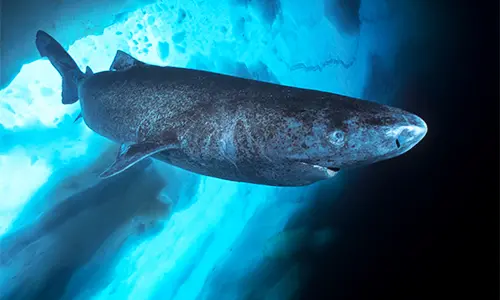
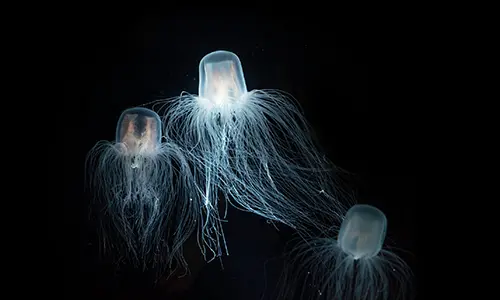
From the brief but impactful life of a mayfly to the centuries-long existence of the Greenland shark, these examples offer a glimpse into the diverse and fascinating ways animals grow and age in nature.
Animal Reproduction and Parenthood Facts That Might Surprise You
The ways animals reproduce and care for their young are as diverse and fascinating as the animals themselves. From unusual parenting roles to extraordinary reproductive habits, the animal kingdom is full of surprises. Let’s dive into some of the most interesting and unique examples of animal reproduction and parenthood.
- Seahorses: Males Give Birth: Seahorses are exceptional in the animal world. It’s the males who carry and give birth to the young. The female transfers her eggs to the male’s pouch, where he fertilizes them and carries them until they hatch. This role reversal is a remarkable example of nature’s diversity.
- Emperor Penguins: Fathers Protect the Eggs: Emperor penguin dads have a very important job in the cold land of Antarctica. When the female penguin lays her egg, she gives it to the male. The male then keeps the egg warm on his feet, under a piece of skin. He looks after the egg all through the freezing winter without eating, showing amazing care as a father.
- Kangaroos: Long Gestation in the Pouch: Kangaroos have a unique approach to motherhood. After a brief gestation, a kangaroo mother gives birth to a tiny joey, which then crawls into her pouch. Inside the pouch, the joey continues to grow and develop for several months. This remarkable method of rearing highlights the adaptability of marsupials.
- Octopuses: Mothers’ Ultimate Sacrifice: The parenting journey of a female octopus is both touching and tragic. After laying her eggs, she guards and cares for them tirelessly, without eating. This devotion often leads to her death shortly after the eggs hatch, a poignant example of the sacrifices made in the animal kingdom.
- Cuckoos: Brood Parasitism: Cuckoos have a unique way of taking care of their eggs. They lay them in the nests of other birds, and those birds raise the cuckoo chicks, thinking they are their own. This sneaky plan is called ‘brood parasitism.’ It’s a special name for when birds use other birds’ nests for their own eggs.

Each of these examples sheds light on the incredible variety and complexity of reproductive and parental strategies among animals. From seahorses to cuckoos, life carries on in many different ways throughout the animal world.
Animal Group Names and Social Structures
Animals are not just fascinating on their own; they also have interesting ways of living together. Many animals form groups, and these groups often have special names that tell us something about the animals themselves. Let’s explore some of these unique group names and what they tell us about the animals’ social lives.
- A Group of Owls is Called a Parliament: The name ‘parliament’ comes from old tales that saw owls as wise and serious, much like a group of leaders. This name reflects how people have viewed owls as symbols of wisdom throughout history.
- A Group of Flamingos is Called a Flamboyance: This name captures the essence of flamingos with their bright pink feathers and theatrical behavior. The name ‘flamboyance’ really matches how eye-catching and fancy they are when they’re in a group.
- A Group of Crows is Called a Murder: Crows in a group are known as a ‘murder.’ This name might sound scary, but it’s just from folklore. Crows are actually smart, friendly birds who are great at figuring things out.
- A Group of Giraffes is Called a Tower: Given their impressive height, it makes sense to call a group of giraffes a ‘tower.’
- A Group of Lions is Called a Pride: The term ‘pride’ is used for a group of lions, likely reflecting their majestic and dignified behavior. In a pride, lions demonstrate strong familial bonds and cooperative living.
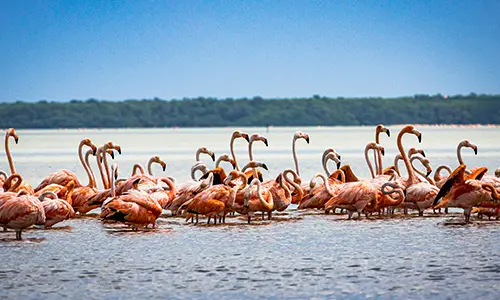
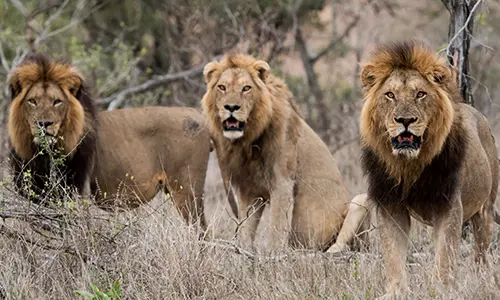
These names give us fun ways to refer to groups of animals that are based on those animals’ behavior, appearance, and ways humans have historically viewed them. From the wisdom of owls to the majesty of lions, these names add an extra layer to our understanding of the animal kingdom.
Exceptional World Records in the Animal Kingdom
The animal kingdom is a showcase of nature’s extremes, and it’s filled with astonishing record holders. From lightning-fast speeds to gigantic sizes, many animals possess incredible abilities that set them apart. Let’s spotlight some of the most impressive record holders in the natural world and discover what makes them so extraordinary.
- Cheetahs: The Fastest Land Animals: Cheetahs are the speed champions of the land. They can sprint at speeds of 60-70 mph in just a few seconds. This incredible speed is essential for catching their fast-moving prey, like gazelles.
- Blue Whales: The Largest Animals Ever: Dominating the ocean’s vast expanse, blue whales are the largest animals ever to have lived on Earth. They can reach lengths of up to 100 feet and weigh as much as 200 tons. Their immense size is awe-inspiring and a true wonder of the natural world.
- Peregrine Falcons: The Fastest Birds in a Dive: Peregrine falcons are the aerial speedsters of the bird world. During their hunting dives, they can reach astounding speeds over 200 mph. They are not only the fastest birds but also some of the fastest creatures on Earth.
- The Bumblebee Bat: The World’s Smallest Mammal by Size: The bumblebee bat, roughly the size of a large bumblebee, holds the title for the smallest mammal in the world by size. This tiny mammal is a remarkable example of how diverse mammal sizes can be, from the gigantic blue whale to this miniature bat.
- The Sperm Whale: The Deepest Diving Mammal: Sperm whales are amazing deep-sea divers. They can dive deeper than any other mammal, going down more than 2,000 meters. They can even hold their breath for up to 90 minutes!
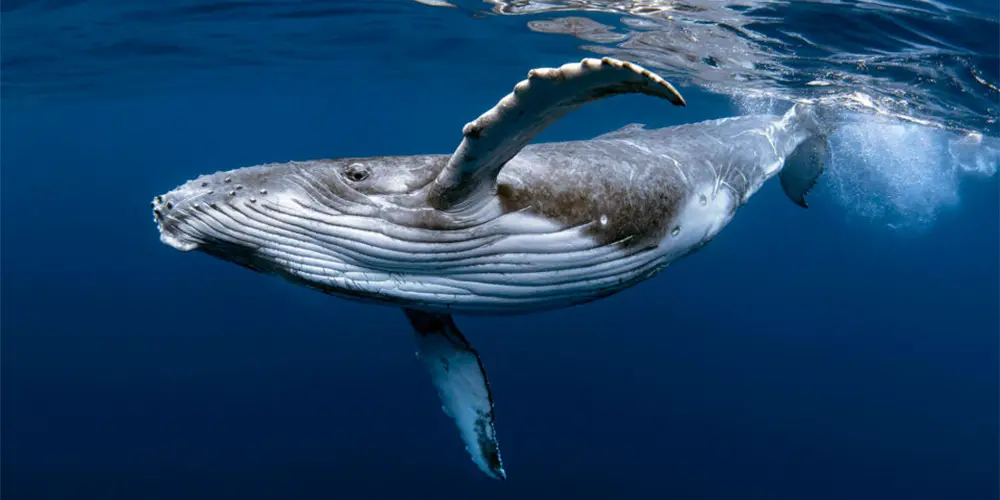
Each of these record-breaking animals demonstrates the incredible diversity and adaptability of life on Earth, from the fastest and largest to the smallest and deepest living creatures.
Wrapping Up Our Animal Adventure
As our journey through the animal kingdom comes to an end, we hope you’ve found these fun facts about animals as fascinating as we do. From the clever ways animals communicate, to their remarkable adaptations, each fact we’ve shared is a testament to the diversity and wonder of nature.
Remember, every day is an opportunity to discover something new about the world around us. May your newfound knowledge inspire you to look at nature with fresh eyes and a deeper appreciation for the amazing life it sustains.
Responses